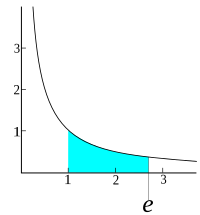
Evaluation of thermoacoustics parameters of CoFe2O4–ethylene glycol nanofluid using ultrasonic velocity technique
Sign Up to like & getrecommendations! Published in 2018 at "Journal of Materials Science: Materials in Electronics"
DOI: 10.1007/s10854-018-0386-1
Abstract: Chemical co-precipitation method was employed to synthesize cobalt ferrite (CoFe2O4) nanoparticles and to prepare stable nanofluids. The cobalt ferrite nanoparticles and the prepared nanofluids were characterized further for their structural, morphological, elemental, magnetic properties and… read more here.
Keywords: cofe2o4 nanoparticles; thermo acoustic; ethylene glycol; ultrasonic velocity ... See more keywords

Using ultrasonic velocity for monitoring and analysing biodiesel production
Sign Up to like & getrecommendations! Published in 2018 at "Fuel"
DOI: 10.1016/j.fuel.2018.04.039
Abstract: Abstract This paper presents an ultrasonic method capable of being applied in a process line for monitoring the soybean oil transesterification with methanol, catalysed by KOH. Four production routes had been studied, varying the concentration… read more here.
Keywords: using ultrasonic; production; method; monitoring ... See more keywords

X-ray micro-computed tomography and ultrasonic velocity analysis of fractured shale as a function of effective stress
Sign Up to like & getrecommendations! Published in 2019 at "Marine and Petroleum Geology"
DOI: 10.1016/j.marpetgeo.2019.07.015
Abstract: Abstract Ultrasonic velocity is a key shale gas reservoir property, especially in the context of gas production or CO 2 injection for geo-sequestration. This ultrasonic velocity reflects the dynamic elastic properties of the rock, and… read more here.
Keywords: ultrasonic velocity; effective stress; fracture; fractured shale ... See more keywords

Ultrasonic Characterization of Amyloid-Like Ovalbumin Aggregation
Sign Up to like & getrecommendations! Published in 2017 at "ACS Omega"
DOI: 10.1021/acsomega.7b00366
Abstract: Thermal processing conditions, pH, and salt content affect the formation of egg white ovalbumin amyloid, which was investigated using high-precision measurements of ultrasonic velocity and attenuation. These were related to fluorescence and particle size measurements.… read more here.
Keywords: amyloid; amyloid like; like ovalbumin; ultrasonic velocity ... See more keywords

Service Life Prediction of Concrete Coated with Surface Protection Materials by Ultrasonic Velocity in Cold Region
Sign Up to like & getrecommendations! Published in 2023 at "Separations"
DOI: 10.3390/separations10060328
Abstract: Lithium silicate (LS) crack repairing material, working as a crystal waterproof material, could be used to strengthen concrete made from solid waste materials. This paper presents the results of water absorption and rapid freeze–thaw tests… read more here.
Keywords: service; ultrasonic velocity; service life; water absorption ... See more keywords